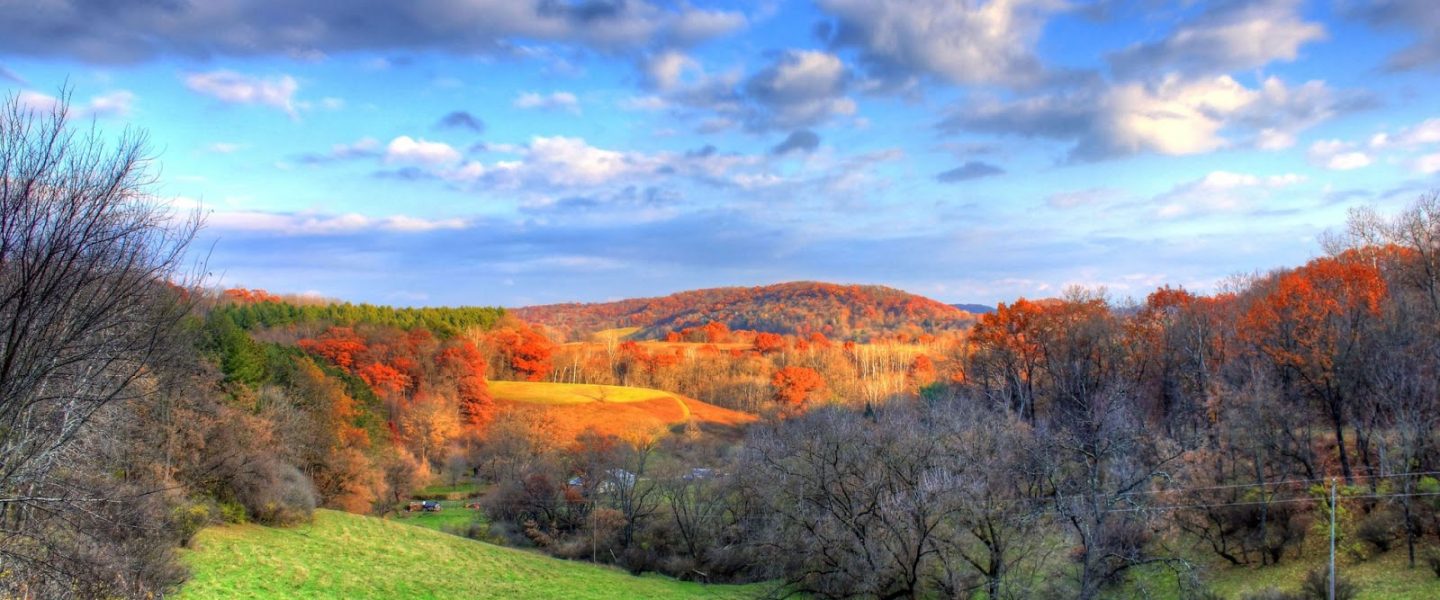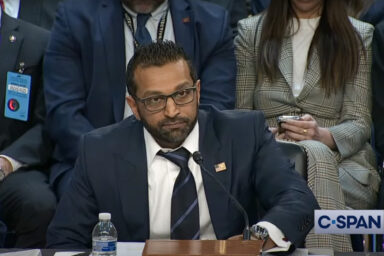In 1985 Bryan Stanley killed three men. In an attempt at redemption, he has spent decades fighting against the odds to create the first national park in Wisconsin.
The idea first came to Bryan Stanley in 1999 during a fall excursion to Indian Lake County Park in Dane County, WI. As he looked over the gently rolling farmland on either side of County Highway K, Stanley told the driver that he wanted to create a national park in the state’s Driftless area in Crawford County, a couple of hours to the west.
“It just popped into my head,” Stanley wrote in one of a series of letters to a WhoWhatWhy reporter in the summer of 2020. “I did not realize that this project was going to take over my life.”
Stanley has been working to create a national park in Wisconsin for 18 of the 33 years he has been incarcerated at the Mendota Mental Health Institute, in Madison, for a 1985 triple homicide.
In 2006, after seven years of hard work and research, Stanley self-published The Becoming of the Driftless Rivers National Park, a 280-page book that outlines his vision. He has sent copies to local politicians and conservationists, has mailed it to authorities at national parks and national monuments, and has written articles advocating for the park’s establishment. He argues that a park in the Driftless area could provide recreation for millions of Americans and prove an economic draw for the county, state, and entire Upper Midwest.
Stanley faces a big roadblock in his quixotic quest: 16,000 people live in the 600 square miles of farmland, bluffs, prairies, and forests that make up Crawford County. For the county to become a national park, he would need to convince residents, property owners, businesses, and politicians to ask the federal government to acquire it and then manage it.
Stanley is undeterred.
“I started out on this project to do a good deed for people and save the land of the Driftless area,” he wrote in one of his letters. “However, in time, and with so much work and effort, it has become an act of redemption for me.”
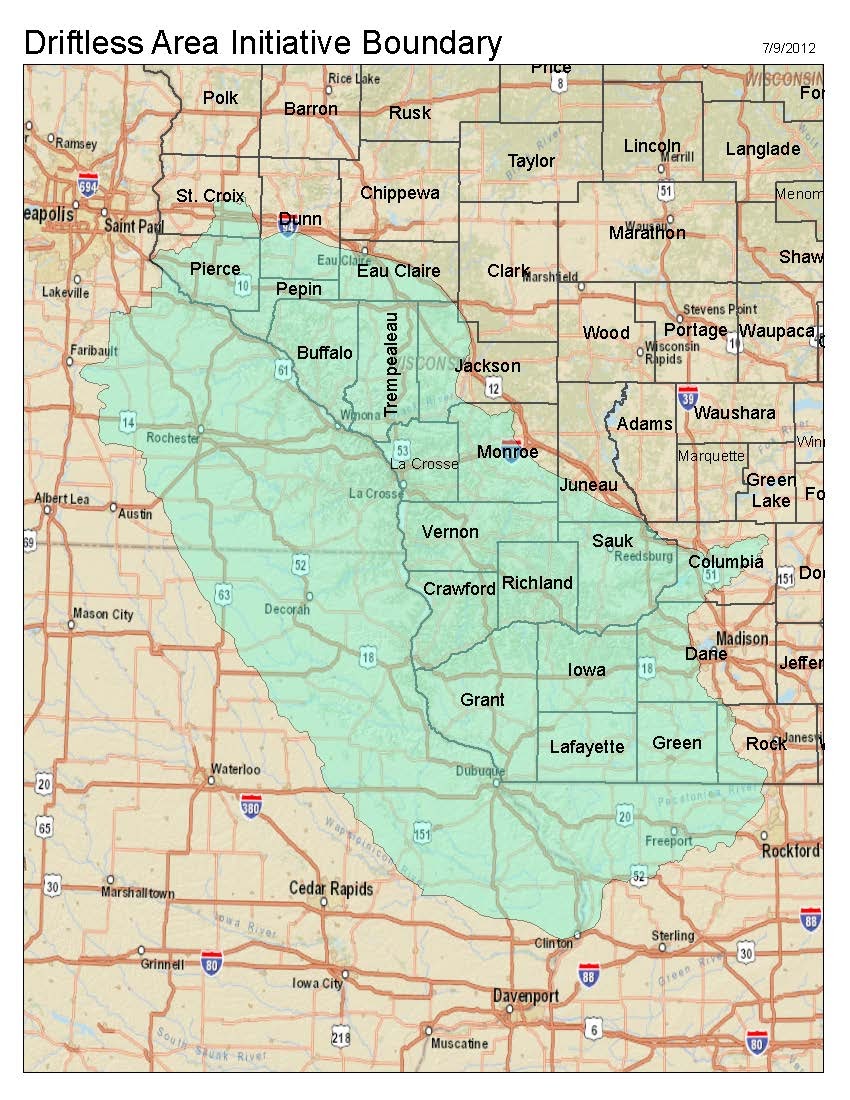
Why the Driftless?
There are no national parks in Wisconsin. The closest is Indiana Dunes, designated a national park in February 2019; driving there from Kenosha, the nearest city in Wisconsin, takes two hours. Even a quick glance at a map of national parks reveals a large blank area in the middle of the country: Illinois, Iowa, Nebraska, Kansas, and Oklahoma all lack a national park.
The Driftless area, covering 24,000 square miles, is so named because the region escaped the glacial drift that affected much of North America during the last ice age, which flattened the terrain and deposited clay, silt, sand, gravel, and boulders over vast tracts. As a result, the Driftless area’s landscape, geology, flora, and fauna are significantly different from those in other parts of the Midwest. The land is marked by rocky bluffs, deep valleys, rolling hills, and meandering streams.
“The topography lends itself to dairy farming and grazing, which allows native plants and animals space to live within a landscape that supports both people and wildlife,” said Melinda Knutson, a retired ecologist who specializes in the Driftless area. “Several major river systems flow through the area, making it a biodiversity hotspot for aquatic plants and animals and also a major migration stopover area for waterfowl.”
Most of the Earth’s algific (cold-producing) talus slopes are in the Driftless area. This rare ecosystem is marked by crumbling limestone that retains ice through the year and emits cold air into the summer. The slopes are home to the Iowa Pleistocene snail, an endangered species once believed to be extinct.
The region’s Kickapoo River, a tributary of the Wisconsin River, is believed to be one of the oldest rivers in the world.
The area also has an unusual human history, with evidence of habitation going back millennia. Native American tribes left effigy mounds and pictographs throughout the region. Crawford County’s seat, Prairie du Chien, is the second-oldest European settlement in Wisconsin, dating to the 17th century.
For these reasons, Stanley believes that the county makes a great candidate for federal protection.
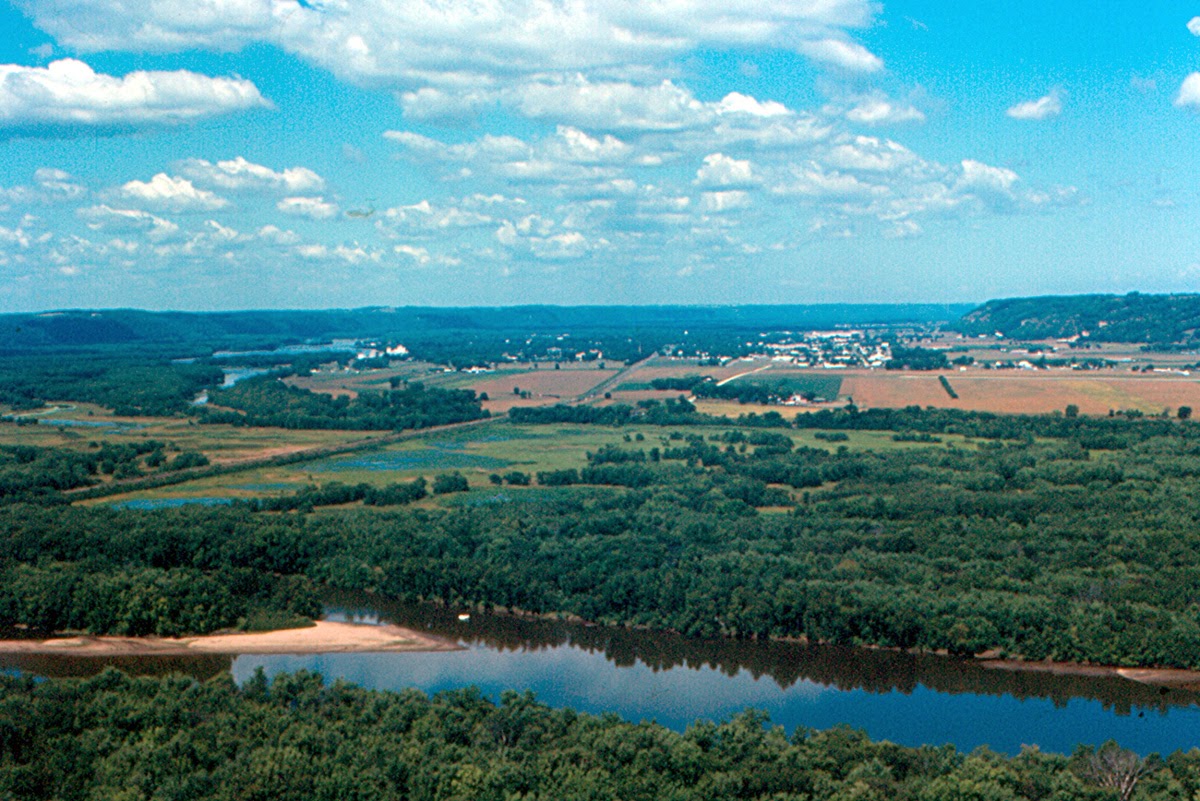
Stanley’s Story
Bryan Stanley, now in his mid-60s, has long been interested in environmentalism and conservation. Growing up in La Crosse, WI, 60 miles north of Prairie du Chien, he spent much of his youth hunting, fishing, and camping. Childhood friends remember him as intelligent and athletic, with a deep interest in religion, according to a 1985 article published by the La Crosse Tribune.
Stanley graduated in 1977 from the University of Wisconsin-Stevens Point, where he studied resource management and soil sciences. After graduating from college, a desire to learn foreign languages prompted Stanley to enlist in the Army. However, while serving, he suffered a “nervous breakdown,” as reported by the La Crosse Tribune. His condition was later diagnosed as paranoid schizophrenia.
After being discharged from the Army for medical reasons in 1983, he worked as a soil scientist for the Soil Conservation Service in South Dakota and the US Forest Service in northern Michigan. This work experience, Stanley wrote, gave him “a great ability in evaluating landscapes.”
He eventually found himself back in La Crosse. Once there, he stopped taking his medication.
On February 7, 1985, two days after moving to nearby Onalaska, Stanley, then 29, entered St. Patrick’s Catholic Church with a shotgun he’d taken from one of his roommates. He opened fire on the Rev. John Rossiter, lay minister Ferdinand Roth Sr., and church custodian William Hammes, slaying all three.
Police apprehended Stanley minutes later. He was carrying the murder weapon in a case he threw into a snowbank before surrendering to police. Once in custody, he gave his name as Elijah, a reference to the Biblical prophet, and identified himself as “a soldier of God” who had “killed three priests” being controlled by devils. The La Crosse Tribune reported that he asked to speak to the Pope about females being allowed to read Scriptures during Mass.
Stanley faced three first-degree murder charges but was found not guilty due to “mental disease or defect.” The judge sent him to Mendota.
By the mid-1990s, a medication improved Stanley’s mental health, and he hoped to be released, but in 1999 a judge ruled that he had to remain at the institution. Stanley decided to channel his disappointment with the ruling into something constructive by founding the Driftless Rivers National Park Foundation, a registered nonprofit.
Stanley hired a literary editor, artist, and photographers to help him produce a book that would detail his vision for the national park. He corresponded by letter (his preferred method of communication) with the freelancers, who were initially unaware of his circumstances. Joe De Maio, who was hired to take photos, did eventually visit Stanley at Mendota. De Maio said that Stanley “seemed perfectly normal to me. It was hard to believe that he was such a murderer.”
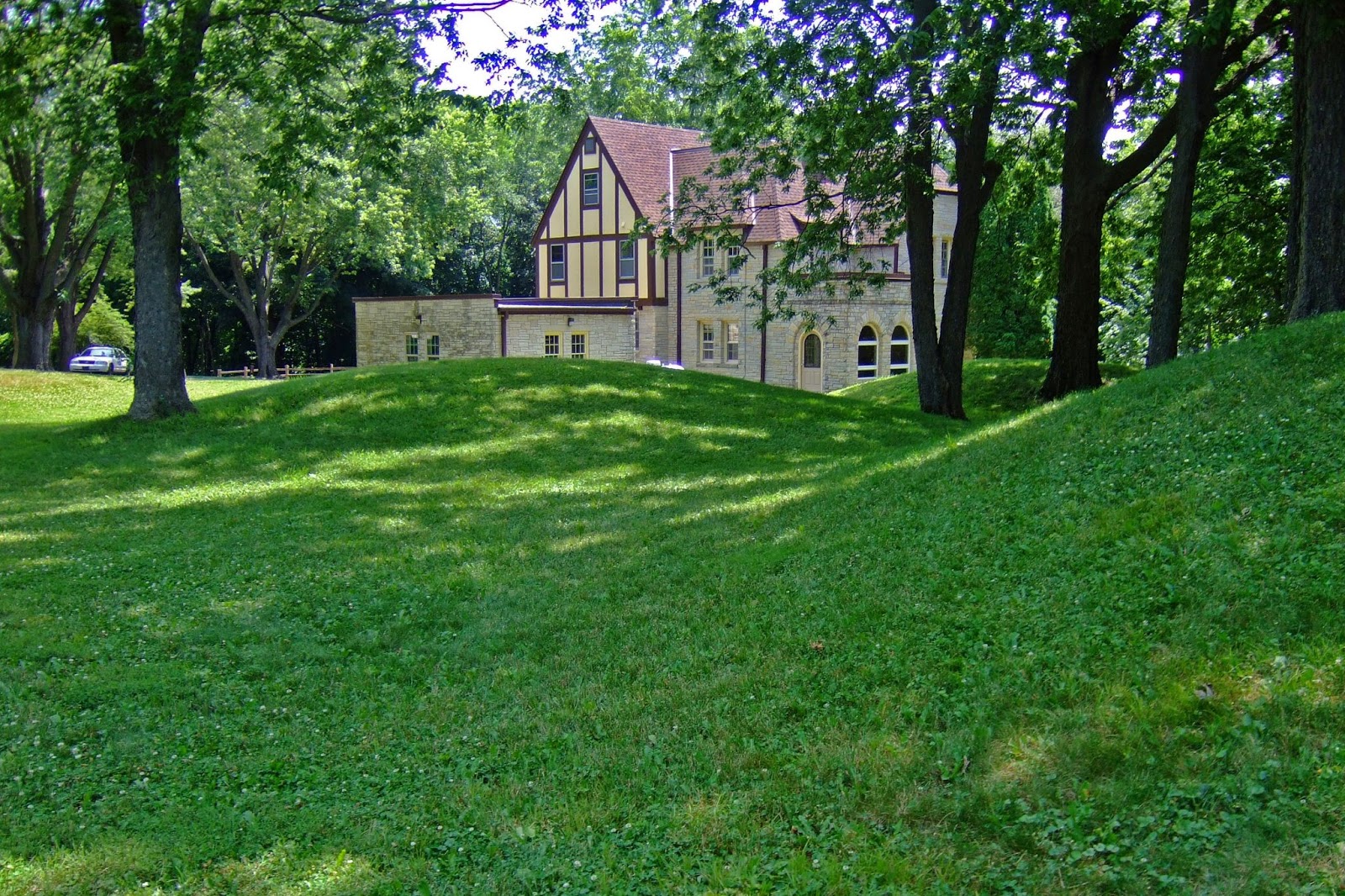
Frank Mittelstadt, who illustrated the book and also met with Stanley, was impressed not only by his professionalism but by his personality. “He was always very cordial and businesslike, and, other than maybe an occasional facial tic, I could detect nothing wrong with the man,” he said. “The reason he was institutionalized was not a factor in our business relationship and was never mentioned by either of us.” Although they haven’t seen each other in more than a decade, the two men still exchange Christmas cards.
The Becoming of the Driftless Rivers National Park covers the history of the region’s geography, geology, flora, and fauna, and the economic benefits of a national park. Stanley says that any proceeds from the book will go to the park’s creation and land acquisition.
“It takes a lot of passion and drive to pursue a dream the way Bryan has, and you really have to respect that,” Mittelstadt said.
By the mid-2000s, Stanley’s condition had stabilized enough that he was allowed to hold a part-time job in Madison, take courses at a technical college, and live in a minimum-security unit at Mendota. As a result, he was granted a conditional release from Mendota in 2009.
He moved back to La Crosse, but his second chance at life lasted only until 2012, when he suffered a relapse, experiencing violent thoughts and anxiety attacks. A district judge ordered his return to Mendota so that doctors could monitor his treatment and medication. His neighbors told the La Crosse Tribune that they were shocked to learn about his past; they described him as quiet and friendly.
Since then, Stanley has been back at Mendota. He now lives in a group home on the grounds.
Stanley is well aware that his story may be affecting his cause. “I thought that when I started this project that people would be able to separate me from the project,” he wrote. “This hasn’t always happened.” He said that area bookstores no longer carry his book and that invitations to speak at two events were rescinded when his background became known.
“I would say that the concept of Crawford County becoming a national park is VERY unrealistic, and from what I’ve heard from leaders and many others who reside and conduct business there … this will never happen.” — Jim Bowman
Practical Matters
For land to be acquired by the federal government, Congress requires that the Department of the Interior carry out a feasibility study assessing the site’s natural resources, its environmental and historic attributes, and the ways in which the federal government might manage this land should it be acquired. The site is then graded, and the highest-ranking sites are referred to the House and Senate to be voted on for designation as a national park.
Lynn McClure, senior regional director for the National Parks Conservation Association, cites the National Park Service’s three criteria for new national parks: significance (perhaps it’s the nation’s only extant example of an ecosystem), suitability (whether the park service is needed to manage the land), and feasibility (whether it’s practical for the park service to play that role).
In 2020, Stanley estimated that it would cost the government about $1.5 billion to purchase Crawford County (based on 357,000 acres at $4,000 an acre). He noted that there’s a precedent for such a high price: In 1968, the federal government spent $92 million for the 58,000 acres that became Redwood National Park. Adjusted for inflation, that’s more than $684 million in 2020 dollars, for only one-seventh of the land suggested for his park. “The park is more than worth” the cost, Stanley wrote.
Stanley has asserted that if a Driftless Rivers National Park were established, Crawford County, one of the poorest in the state, would see an increase in annual revenue of more than $300 million, comparable to the local economic impact of other national parks, and would enjoy 5,000 new jobs.
In principle, McClure agrees with Stanley. “If you live near a national park, you are incredibly fortunate,” she said. “There are only 419 of these special places around the country. For a region, it certainly means positive economic impact through increased tourism. This creates direct impact through job growth as well as indirect through the growth of ‘gateway’ business to serve tourists.” But she added a flip side. “If you are lucky enough to get a national park created near you, you also take on the responsibility of protecting it!”
Few local residents know about Stanley’s idea and most of those who do think it’s a non-starter. Don Brown, president of the Crawford County Farm Bureau, said he could see pros and cons but that creating a national park in the county seemed “far-fetched.” He voiced support for environmentally responsible farming practices but worried that a park might bring about new regulations that were more of a hindrance than a benefit to farmers.
Dave Bonifas, director of the Mississippi River Regional Planning Commission, suggested that a national park designation would actually hurt Crawford County’s economy. “There’s a lot of agriculture that goes on in that area and small businesses,” he said. “Tourism has a big impact, but there’s still a lot of other economic development that takes place in the area.”
Jim Bowman, a regional developer, said, “I would say that the concept of Crawford County becoming a national park is VERY unrealistic, and from what I’ve heard from leaders and many others who reside and conduct business there … this will never happen.”
Dave Troester, county conservationist at Crawford County Land Conservation, said that, based on his knowledge, Stanley’s plan was “totally unrealistic.” Troester’s primary reservation was how a national park could be created in a county with 16,000 residents. “I cannot even fathom what it would take to convince them to sell or buy them out or do whatever would need to be done,” he said.
Troester conceded that some unprotected areas of the county need to be conserved, specifically bluff prairie lands, where tall grasses grow on steep rock bluffs, and oak barrens, where the trees grow in dry, acidic soil. But he pointed out that state and local officials are already working to protect those areas.
Knutson agreed that a national park in the region is unlikely. “Just from public sentiment, I don’t really think it’s going to fly,” she said. “I think that the people that live here appreciate the beauty [of the area], but I’m not sure they understand the importance of protecting it as much.” She is hopeful that local landowners will at least do their part by conserving their property and putting it in permanent trust.
Some might argue that the Driftless area be given a different status than “national park,” but that designation grips the public in a way that “national monument” or “recreation area” doesn’t.
Marie Sauter, superintendent of New Mexico’s White Sands National Park, noticed the difference when White Sands, a national monument since 1933, became a national park in December 2019. “We had a stronger January [in 2020] than we had in years,” in terms of the number of visitors, Sauter said. “We thought we were pretty much on track to break all-time visitation records for White Sands,” before the COVID-19 crisis shut down parks across the US.
Despite fears that the designation of a Driftless Rivers National Park would eliminate agriculture, the park service does allow farming in one park. Through its Countryside Initiative program, 10 farms operate within Cuyahoga Valley National Park in northeastern Ohio. People can lease farmsteads in the park for as long as 60 years if they commit to farming sustainably.
Stanley has a similar idea for Driftless Rivers. Farms could remain “to enhance the park experience,” he suggested. “For the record, I will say that forcing landowners off their land is totally unacceptable,” he added, underscoring that participation in the park — agreeing to sell or lease to the government or continue to run businesses — would be voluntary. He’s hoping for an 80 percent participation rate from Crawford County landowners. “Landowners would be overly compensated for their land and given pensions for how much land they give to the park. This includes those who may wish to continue to live out their lives in the park.” Presumably, much of that payout would be part of the $1.5 billion purchase cost.
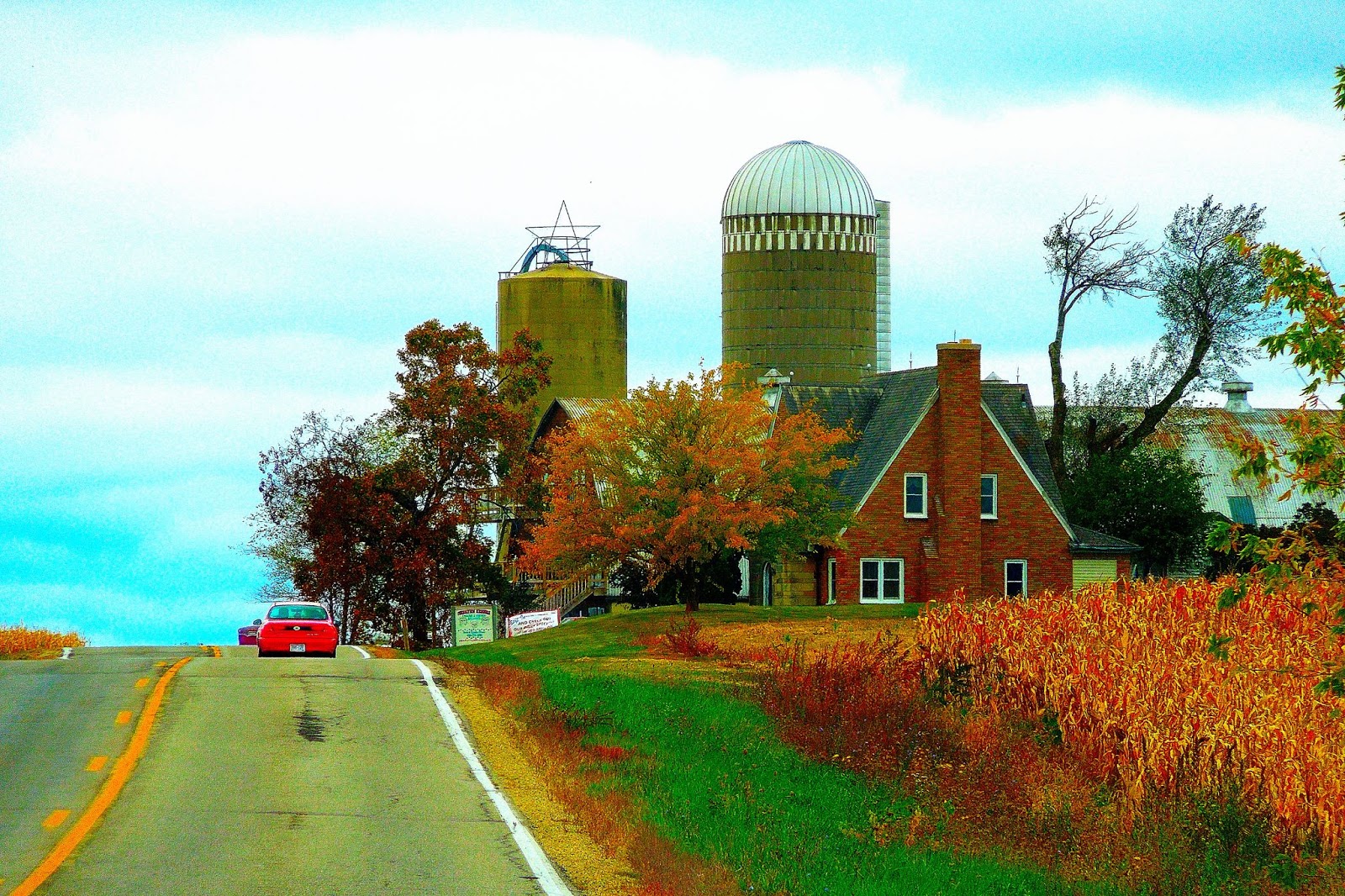
Stanley suggests that homeowners could rent their properties to park visitors or operate bed-and-breakfasts. “I know how much people love their land, and this would allow them to retain their rural lifestyle, allow for non-consumptive use of resources and make friends with their guests who will come back year after year,” he wrote in a letter. “Plus, it will be good for park visitors to experience what rural life is like.”
Stanley notes that Crawford County’s towns could continue to provide gas, food, and lodging, and that the park would spawn new businesses.
As an alternative to a national park, Stanley has also suggested that Driftless Rivers could be created as a “park zone,” skirting the need for congressional funding. The zone would be privately owned but operated in conjunction with the park service, at least initially. He envisions that the federal government would eventually assume ownership of the land, which would someday become a national park.
Like-Minded Individuals
It is not unheard of for a national park to be the brainchild of one person. George B. Dorr is considered the father of Maine’s Acadia National Park. Starting in 1901, he lobbied to preserve the state’s coast from logging. In 1916 President Woodrow Wilson created Acadia’s predecessor, Sieur de Monts National Monument. Dorr was superintendent from 1916 until his death in 1944.
In the late 1920s, Minerva Hamilton Hoyt set out to protect desert plants in southern California. The outcome was Joshua Tree National Monument, which became a national park in 1994, nearly a half-century after Hoyt’s death. She also contributed to the creation of Death Valley National Park and Anza-Borrego Desert State Park.
At the same time Hoyt was fighting to save southern California’s deserts, Ernest Coe set out to preserve rare birds and plants in Florida’s Everglades. President Harry Truman designated the Everglades a national park in 1947.
At least a couple of people hold out hope that Stanley can join the ranks of Dorr, Hoyt, and Coe.
“I’m sure it’s a combination of the natural features and the cultural history of the Driftless area that could move it,” McClure suggested.
In January 2020, a month after White Sands became a national park, National Geographic published an article by Jacqueline Kehoe entitled “White Sands is the newest national park. These places might be next.” The second potential park mentioned was Driftless Rivers.
Stanley said he wasn’t aware of the article but that it was “gratifying” to hear that his work was finally getting some acknowledgment.
Kehoe, an Iowa native now living in Wisconsin, said that Midwestern pride inspired her to include Stanley’s project in her list. She admitted that the process for national park designation looks “really hard” but argued that if Indiana Dunes can be a national park, so can Driftless Rivers. “I think that if the movement were to gain public traction, a national park in the area makes sense economically, geographically, and geologically, which is why I could justify including it.”
For Stanley, Driftless Rivers National Park would be not only an atonement but a legacy. “It is because of the heinous crime I committed 35 years ago in an act of mental illness that developed while I was in the Army,” Stanley wrote. “That is where the park comes in. Something good could come out of it all.”
“All of us will be gone in the not-too-distant future, but the land — and the park — will remain,” he wrote. “What a gift this will be to future generations.”
